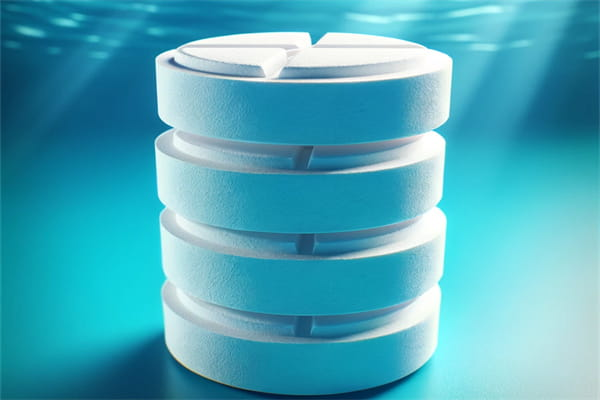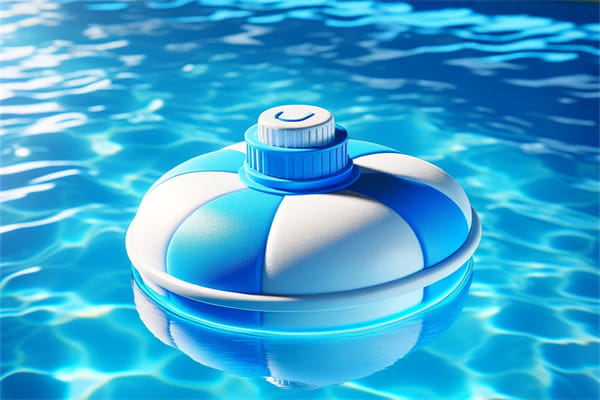When it comes to pool maintenance, using chlorine tablets is a popular, convenient, and effective method to keep your water clean and safe. However, a common question that arises is: Can I put chlorine tablets directly into the pool? The short answer is no, and here’s why. This blog post will explain the potential risks of placing chlorine tablets directly in the pool, outline the correct methods for using chlorine tablets, and discuss common mistakes and how to avoid them.

Ⅰ. Potential Risks of Putting Chlorine Tablets Directly Into the Pool
1. Localized High Chlorine Concentration
Placing chlorine tablets directly in the pool can lead to localized high concentrations of chlorine. This can cause several problems:
Risk of Bleaching: Direct contact with pool surfaces can cause the chlorine to bleach and damage the pool liner, plaster, or tiles. This not only affects the aesthetics of your pool but also its structural integrity.
Uneven Distribution: Chlorine tablets dissolve slowly, and when placed directly in the pool, they may not distribute evenly. This can result in some areas being over-chlorinated while others are under-chlorinated, leading to inconsistent sanitation.
2. Equipment Damage
If chlorine tablets are placed in the skimmer, the high concentrations of chlorine passing through the pool’s circulation system can cause damage:
Pump and Filter Damage: The high chlorine levels can corrode and wear down the pool pump and filter, leading to costly repairs or replacements.
Skimmer Basket Issues: Chlorine tablets can erode the skimmer basket, reducing its effectiveness and leading to more frequent replacements.
Ⅱ. Correct Methods for Using Chlorine Tablets
To ensure your pool remains clean and safe without risking damage, it’s crucial to use chlorine tablets correctly. Here are the recommended methods:
1. Chlorine Floaters

Description: A chlorine floater is a simple device that holds chlorine tablets and floats on the pool’s surface. It gradually dissolves the tablets, releasing chlorine evenly throughout the pool.
Benefits: Floaters are inexpensive, easy to use, and effective at maintaining consistent chlorine levels. They also prevent direct contact between the tablets and pool surfaces, avoiding localized bleaching.
2. In-Line Chlorinators
Description: In-line chlorinators are installed directly into your pool’s plumbing system. They allow for controlled, consistent distribution of chlorine as water flows through them.
Benefits: These devices offer precise control over chlorine levels and are ideal for pool owners who want a more automated solution. In-line chlorinators are excellent for ensuring even chlorine distribution throughout the pool.
3. Off-Line Chlorinators
Description: Off-line chlorinators are connected to the pool’s plumbing via a bypass line. They function similarly to in-line chlorinators but are easier to install and can be added to existing pool systems without major modifications.
Benefits: Off-line chlorinators provide controlled chlorine distribution without requiring major changes to your pool’s plumbing. They are a great option for retrofitting existing pools with modern chlorination systems.
Ⅲ. Common Mistakes and How to Avoid Them
1. Direct Skimmer Placement
Explanation: Placing chlorine tablets in the skimmer can cause high chlorine concentrations in the skimmer, potentially damaging the pool pump and filter.
How to Avoid: Use a chlorine floater or an in-line/off-line chlorinator to ensure even distribution and protect your equipment. These methods prevent the high chlorine concentration from passing directly through the pool’s filtration system.
2. Over-Chlorination
Risks: Using too many chlorine tablets at once can lead to over-chlorination, causing skin and eye irritation for swimmers, and damaging pool equipment and surfaces.
Finding the Right Balance: Follow the recommended dosage: use one 3-inch chlorine tablet for every 5,000 gallons of water. Regularly test your pool water with a reliable test kit to ensure chlorine levels remain between 1-3 ppm. Adjust the number of tablets based on the test results to maintain optimal chlorine levels.
3. Under-Chlorination
Dangers: Using too few chlorine tablets results in under-chlorination, leading to bacteria and algae growth.
Signs to Watch For: Cloudy water, unpleasant odors, and visible algae are signs of under-chlorination. Ensure you are adding the correct number of tablets based on your pool size and regularly testing the water to maintain proper chlorine levels.
Ⅳ. Conclusion
Maintaining a clean and safe pool requires proper use of chlorine tablets. Avoid placing tablets directly into the pool to prevent damage and ensure even distribution. Use floaters, in-line chlorinators, or off-line chlorinators for effective chlorination. By following these guidelines, you can enjoy a sparkling, safe pool all season long, free from the worries of improper chlorination.





